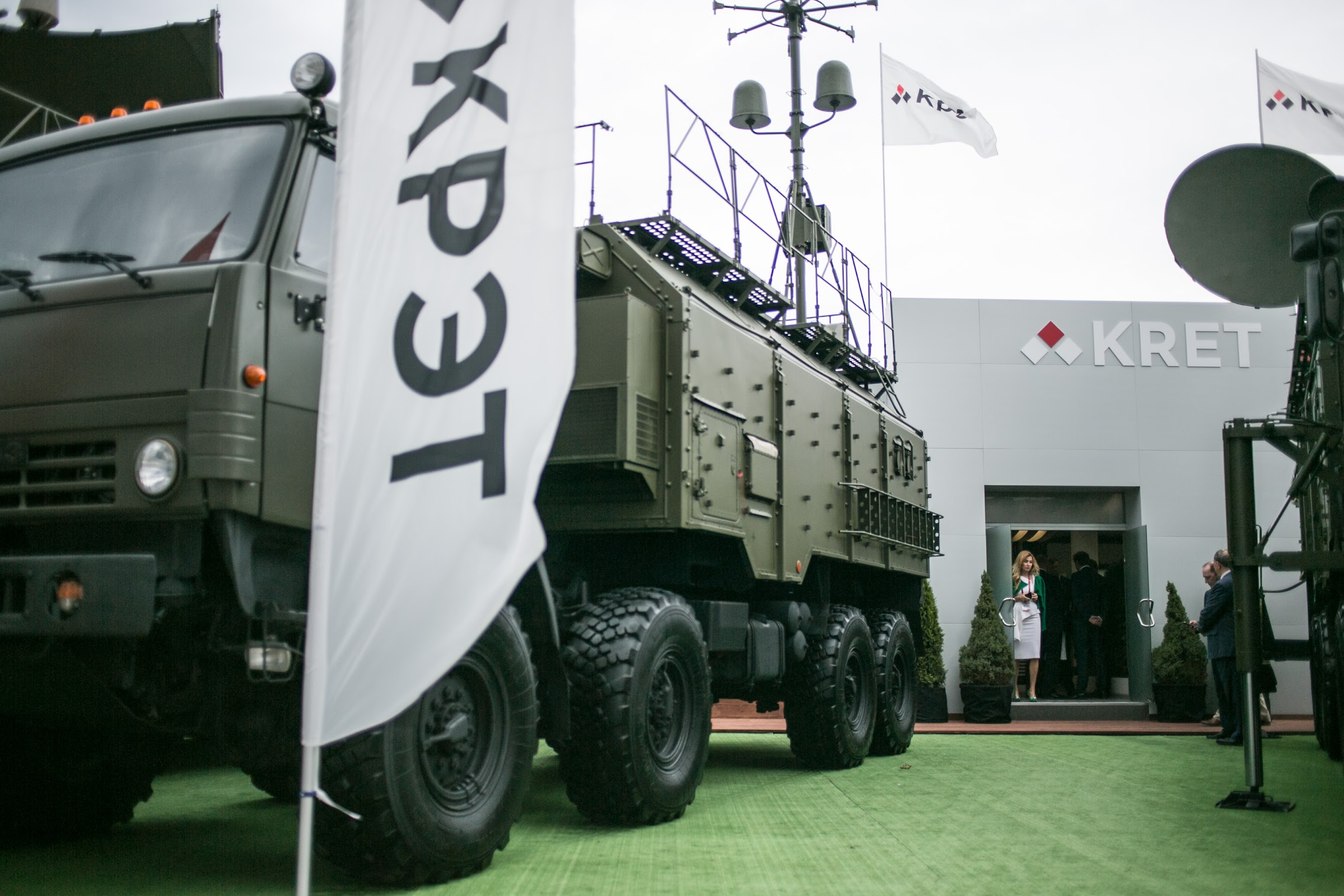
Photo: Igor Rodin
Concern Radio-Electronic Technologies (KRET), that has celebrated the 15th anniversary this year, is the major electronic warfare (EW) manufacturer in Russia. It comprises about 70 companies all over Russia with many of them focused on EW development and manufacturing.
The Khibiny mounted on fighters, the Vitebsk for helicopter protection, the Krasukha ground-based “jammer”, the crawler-mounted Rtut, the Mi-8-based Rychag, and sea-based systems – all these are KRET’s products.
The Khibiny: safe as houses
The Khibiny are not only the highest mountains of the Kola Peninsula, but a powerful electronic warfare system for Russian fighters.
The principle of operation of the Khibiny is as follows. There are receiving and transmitting containers. The receiving container receives a signal from an enemy radar, processes and sends it to cockpit external modules. The transmitting container distorts these signals. Then there are two scenarios: either the enemy is not able to be on target because the target position is distorted, or the enemy missile is diverted, if it has been already launched. Various Khibiny versions are now mounted on the Su-34, Su-35 and other fighters.
The Vitebsk against the Stinger
The Vitebsk electronic countermeasure systems are mounted on the Su-25 strike aircraft, Ka-52 Alligator attack helicopters and Mi-8.
The primary purpose of all EW systems is to prevent a missile launch by the enemy. For this, the radar is jammed in such a way as to prevent the enemy radar aiming to the target. If the launch has occurred after all, then the system attacks the missile.
The next generation Vitebsk has a mirror scanner that must “see” the enemy missile propulsion and the system “brain” that must recognize the target position and direction. After recognition, the control system generates a target tracking command and the scanner starts tracking the target. As soon as the desired tracking accuracy is achieved, the suppression laser is enabled and the missile eventually flies aside to a decoy.
The Krasukha: hallucinations for the enemy
Krasukha (deadly nightshade), belladonna, devil's cherry – all these are names of the same plant whose fruit may cause spatial disorientation and even hallucinations. The Krasukha system affects the enemy vehicles in the same way sending their radars into a tailspin through jamming.
The essence of the Krasukha operation is to detect aircraft radars at a long range – 200 to 250 km. As soon as the target is detected, it is recognized, priorities are chosen and then a decision on target suppression is made.
For example, the enemy strike aircraft are going to attack our territory. The attack area has been already protected by two system vehicles. One is a transmitting-and-receiving vehicle that detects and recognizes enemy radar signals. The other is a jamming station control vehicle that provides electronic countermeasures against the enemy radar. Until the Krasukha is enabled, the pilot can see the surrounding situation and targets for destruction, and can recognize them. When the system has been enabled, the pilot loses all this situation and, therefore, cannot complete the mission.
The Krasukha does not affect friendly aircraft. The system is operated in a single control loop, therefore it has priorities, targets and understanding of friend or foe.

